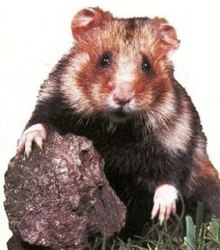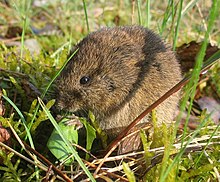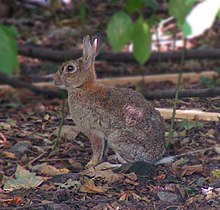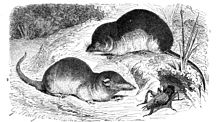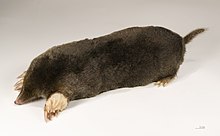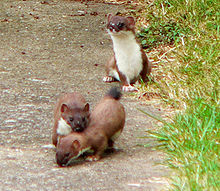J u m p t o c o n t e n t
M a i n m e n u
M a i n m e n u
N a v i g a t i o n
● M a i n p a g e ● C o n t e n t s ● C u r r e n t e v e n t s ● R a n d o m a r t i c l e ● A b o u t W i k i p e d i a ● C o n t a c t u s ● D o n a t e
C o n t r i b u t e
● H e l p ● L e a r n t o e d i t ● C o m m u n i t y p o r t a l ● R e c e n t c h a n g e s ● U p l o a d f i l e
S e a r c h
Search
A p p e a r a n c e
● C r e a t e a c c o u n t ● L o g i n
P e r s o n a l t o o l s
● C r e a t e a c c o u n t ● L o g i n
P a g e s f o r l o g g e d o u t e d i t o r s l e a r n m o r e ● C o n t r i b u t i o n s ● T a l k
( T o p )
1 O r d e r : R o d e n t i a ( r o d e n t s )
2 O r d e r : L a g o m o r p h a ( l a g o m o r p h s )
3 O r d e r : E r i n a c e o m o r p h a ( h e d g e h o g s a n d g y m n u r e s )
4 O r d e r : S o r i c o m o r p h a ( s h r e w s , m o l e s , a n d s o l e n o d o n s )
5 O r d e r : C h i r o p t e r a ( b a t s )
6 O r d e r : C e t a c e a ( w h a l e s )
7 O r d e r : C a r n i v o r a ( c a r n i v o r a n s )
8 O r d e r : A r t i o d a c t y l a ( e v e n - t o e d u n g u l a t e s )
9 L o c a l l y e x t i n c t
10 S e e a l s o
11 R e f e r e n c e s
12 E x t e r n a l l i n k s
T o g g l e t h e t a b l e o f c o n t e n t s
L i s t o f m a m m a l s o f B u l g a r i a
4 l a n g u a g e s
● Б ъ л г а р с к и ● F r a n ç a i s ● Р у с с к и й ● У к р а ї н с ь к а
E d i t l i n k s
● A r t i c l e ● T a l k
E n g l i s h
● R e a d ● E d i t ● V i e w h i s t o r y
T o o l s
T o o l s
A c t i o n s
● R e a d ● E d i t ● V i e w h i s t o r y
G e n e r a l
● W h a t l i n k s h e r e ● R e l a t e d c h a n g e s ● U p l o a d f i l e ● S p e c i a l p a g e s ● P e r m a n e n t l i n k ● P a g e i n f o r m a t i o n ● C i t e t h i s p a g e ● G e t s h o r t e n e d U R L ● D o w n l o a d Q R c o d e ● W i k i d a t a i t e m
P r i n t / e x p o r t
● D o w n l o a d a s P D F ● P r i n t a b l e v e r s i o n
I n o t h e r p r o j e c t s
● W i k i m e d i a C o m m o n s
A p p e a r a n c e
F r o m W i k i p e d i a , t h e f r e e e n c y c l o p e d i a
This list shows the IUCN Red List status of the 101 mammal species occurring in Bulgaria . Two of them are endangered , eleven are vulnerable , and four are near threatened .
The following tags are used to highlight each species' status as assessed on the respective IUCN Red List published by the International Union for Conservation of Nature :
EX Extinct No reasonable doubt that the last individual has died.
EW Extinct in the wild Known only to survive in captivity or as a naturalized populations well outside its previous range.
CR Critically endangered The species is in imminent risk of extinction in the wild.
EN Endangered The species is facing an extremely high risk of extinction in the wild.
VU Vulnerable The species is facing a high risk of extinction in the wild.
NT Near threatened The species does not meet any of the criteria that would categorise it as risking extinction but it is likely to do so in the future.
LC Least concern There are no current identifiable risks to the species.
DD Data deficient There is inadequate information to make an assessment of the risks to this species.
[ edit ] European hamster European water vole Common vole Yellow-necked mouse
Rodents make up the largest order of mammals, with over 40% of mammalian species. They have two incisors in the upper and lower jaw which grow continually and must be kept short by gnawing. Most rodents are small though the capybara can weigh up to 45 kg (100 lb ).
[ edit ] European rabbit
The lagomorphs comprise two families, Leporidae (hares and rabbits ) and Ochotonidae (pikas ). Though they can resemble rodents , and were classified as a superfamily in that order until the early 20th century, they have since been considered a separate order. They differ from rodents in having four incisors in the upper jaw rather than two.
[ edit ]
The order Erinaceomorpha contains a single family, Erinaceidae, which comprise the hedgehogs and gymnures . The hedgehogs are easily recognised by their spines while gymnures look more like large rats.
[ edit ] Common shrew European mole
The "shrew-forms" are insectivorous mammals. The shrews and solenodons closely resemble mice while the moles are stout-bodied burrowers.
[ edit ] Serotine bat Lesser noctule Nathusius' pipistrelle Brown long-eared bat
The bats' most distinguishing feature is that their forelimbs are developed as wings, making them the only mammals capable of flight. Bat species account for about 20% of all mammals.
Family: Vespertilionidae
Subfamily: Myotinae
Genus: Myotis
Alcathoe bat , M. alcathoe DD [10]
Bechstein's bat , M. bechsteini NT [11]
Lesser mouse-eared bat , M. blythii LC [12]
Brandt's bat , M. brandti LC [13]
Long-fingered bat , M. capaccinii VU [14]
Pond bat , M. dasycneme NT [15]
Daubenton's bat , M. daubentonii LC [16]
Geoffroy's bat , M. emarginatus LC [17]
Greater mouse-eared bat , M. myotis LC [18]
Whiskered bat , M. mystacinus LC [19]
Natterer's bat , M. nattereri LC [20]
Subfamily: Vespertilioninae
Subfamily: Miniopterinae
Family: Molossidae
Family: Rhinolophidae
[ edit ] Common dolphins porpoising along a ferry at the port of Batumi
The order Cetacea includes whales , dolphins and porpoises . They are the mammals most fully adapted to aquatic life with a spindle-shaped nearly hairless body, protected by a thick layer of blubber, and forelimbs and tail modified to provide propulsion underwater.
[ edit ] European jackal Stoat Marbled polecat
There are over 260 species of carnivorans, the majority of which eat meat as their primary dietary item. They have a characteristic skull shape and dentition.
[ edit ] Red deer Roe deer
The even-toed ungulates are ungulates whose weight is borne about equally by the third and fourth toes, rather than mostly or entirely by the third as in perissodactyls . There are about 220 artiodactyl species, including many that are of great economic importance to humans.
Locally extinct
[ edit ]
See also
[ edit ]
References
[ edit ]
^ Banaszek, A.; Bogomolov, P.; Feoktistova, N.; La Haye, M.; Monecke, S.; Reiners, T. E.; Rusin, M.; Surov, A.; Weinhold, U. & Ziomek, J. (2020). "Cricetus cricetus " . IUCN Red List of Threatened Species 2020 : e.T5529A111875852.
^ Batsaikhan, N.; Henttonen, H.; Meinig, H.; Shenbrot, G.; Bukhnikashvili, A.; Hutterer, R.; Kryštufek, B.; Yigit, N.; Mitsain, G. & Palomo, L. (2016). "Arvicola amphibius " . IUCN Red List of Threatened Species 2016 : e.T2149A115060819.
^ Musser, G.; Hutterer, R.; Kryštufek, B.; Yigit, N. & Mitsain, G. (2016). "Mus musculus " . IUCN Red List of Threatened Species 2016 : e.T13972A115117618.
^ Kryštufek, B.; Palomo, L.J.; Hutterer, R.; Mitsain, G. & Yigit, N. (2015). "Rattus rattus " . IUCN Red List of Threatened Species 2015 : e.T19360A115148682.
^ Hacklande, K. & Schai-Braun, S. (2019). "Lepus europaeus " . IUCN Red List of Threatened Species 2019 : e.T41280A45187424.
^ Villafuerte, R. & Delibes-Mateos, M. (2019). "Oryctolagus cuniculus " . IUCN Red List of Threatened Species 2019 : e.T41291A45189779.
^ Amori, G.; Hutterer, R.; Kryštufek, B.; Yigit, N.; Mitsain, G.; Palomo, L. J. (2008). "Erinaceus europaeus " . IUCN Red List of Threatened Species 2008 : e.T29650A9508000.
^ Hutterer, R.; Amori, G.; Krystufek, B.; Yigit, N.; Mitsain, G. & Palomo, L.J. (2010). "Crocidura suaveolens " . IUCN Red List of Threatened Species 2010 : e.T29656A9511068.
^ Hutson, A.M. & Paunović, M. (2016). "Myotis alcathoe " . IUCN Red List of Threatened Species 2016 : e.T136680A518740.
^ Paunović, M. (2019). "Myotis bechsteinii " . IUCN Red List of Threatened Species 2019 : e.T14123A22053752.
^ Juste, J. & Paunović, M. (2016). "Myotis blythii " . IUCN Red List of Threatened Species 2016 : e.T14124A22053297.
^ Gazaryan, S.; Kruskop, S.V. & Godlevska, L. (2020). "Myotis brandtii " . IUCN Red List of Threatened Species 2020 : e.T85566997A22054468.
^ Hutson, A. M.; Spitzenberger, F.; Aulagnier, S.; Juste, J.; Karatas, A.; Palmeirim, J. & Paunovic, M. (2010). "Myotis capaccinii " . IUCN Red List of Threatened Species 2010 : e.T14126A4399043.
^ Piraccini, R. (2016). "Myotis dasycneme " . IUCN Red List of Threatened Species 2016 : e.T14127A22055164.
^ Kruskop, S.V.; Godlevska, L.; Bücs, S.; Çoraman, E. & Gazaryan, S. (2020). "daubentonii " . IUCN Red List of Threatened Species 2020 : e.T85342710A22054773.
^ Piraccini, R. (2016). "Myotis emarginatus " . IUCN Red List of Threatened Species 2016 : e.T14129A22051191.
^ Coroiu, I.; Juste, J. & Paunović, M. (2016). "Myotis myotis " . IUCN Red List of Threatened Species 2016 : e.T14133A22051759.
^ Coroiu, I. (2016). "Myotis mystacinus " . IUCN Red List of Threatened Species 2016 : e.T14134A22052250.
^ Gazaryan, S.; Kruskop, S.V. & Godlevska, L. (2020). "Myotis nattereri " . IUCN Red List of Threatened Species 2020 : e.T85733032A22052584.
^ Piraccini, R. (2016). "Barbastella barbastellus " . IUCN Red List of Threatened Species 2016 : e.T2553A22029285.
^ Hutson, A. M.; Spitzenberger, F.; Juste, J.; Aulagnier, S.; Palmeirim, J.; Paunovic, M. & Karatas, A. (2010). "Hypsugo savii " . IUCN Red List of Threatened Species 2010 : e.T44856A10955205.
^ Csorba, G. & Hutson, A.M. (2016). "Nyctalus noctula " . IUCN Red List of Threatened Species 2016 : e.T14920A22015682.
^ Hutson, A. M.; Alcaldé, J. T.; Juste, J.; Karataş, A.; Palmeirim, J. & Paunović, M. (2010). "Nyctalus lasiopterus " . IUCN Red List of Threatened Species 2010 : e.T14918A4471682.
^ Juste, J. & Paunović, M. (2016). "Nyctalus leisleri " . IUCN Red List of Threatened Species 2016 : e.T14919A22016159.
^ Hutson, A. M.; Spitzenberger, F.; Juste, J.; Aulagnier, S.; Palmeirim, J.; Karatas, A. & Paunovic, M. (2010). "Pipistrellus nathusii " . IUCN Red List of Threatened Species 2010 : e.T17316A6966886.
^ Gazaryan, S.; Bücs, S. & Çoraman, E. (2020). "Miniopterus schreibersii " . IUCN Red List of Threatened Species 2020 : e.T81633057A151216401.
^ Taylor, P. (2016). "Rhinolophus blasii " . IUCN Red List of Threatened Species 2016 : e.T19515A21972073.
^ Juste, J. & Alcaldé, J. (2016). "Rhinolophus euryale " . IUCN Red List of Threatened Species 2016 : e.T19516A21971185.
^ Piraccini, R. (2016). "Rhinolophus ferrumequinum " . IUCN Red List of Threatened Species 2016 : e.T19517A21973253.
^ Taylor, P. (2016). "Rhinolophus hipposideros " . IUCN Red List of Threatened Species 2016 : e.T19518A21972794.
^ Alcaldé, J.; Benda, P. & Juste, J. (2016). "Rhinolophus mehelyi " . IUCN Red List of Threatened Species 2016 : e.T19519A21974380.
^ Cooke, J.G. (2018). "Balaenoptera acutorostrata " . IUCN Red List of Threatened Species 2018 : e.T2474A50348265.
^ Gerngross, P.; Ambarli, H.; Angelici, F.M.; Anile, S.; Campbell, R.; Ferreras de Andres, P.; Gil-Sanchez, J.M.; Götz, M.; Jerosch, S.; Mengüllüoglu, D.; Monterosso, P. & Zlatanova, D. (2022). "Felis silvestris " . IUCN Red List of Threatened Species 2022 : e.T181049859A181050999. doi :10.2305/IUCN.UK.2022-1.RLTS.T181049859A181050999.en . Retrieved 3 August 2022 .
^ Breitenmoser, U.; Breitenmoser-Würsten, C.; Lanz, T.; von Arx, M.; Antonevich, A.; Bao, W. & Avgan, B. (2015). "Lynx lynx " . IUCN Red List of Threatened Species 2015 : e.T12519A121707666.
^ Hoffmann, M. & Sillero-Zubiri, C. (2016). "Vulpes vulpes " . IUCN Red List of Threatened Species 2016 : e.T23062A46190249.
^ Hoffmann, M.; Arnold, J.; Duckworth, J. W.; Jhala, Y.; Kamler, J. F. & Krofel, M. (2018). "Canis aureus " . IUCN Red List of Threatened Species 2018 : e.T118264161A46194820.
^ Boitani, L.; Phillips, M. & Jhala, Y. (2018). "Canis lupus " . IUCN Red List of Threatened Species 2018 : e.T3746A119623865.
^ McLellan, B. N.; Proctor, M. F.; Huber, D. & Michel, S. (2017). "Ursus arctos " . IUCN Red List of Threatened Species 2017 : e.T41688A121229971.
^ Reid, F.; Helgen, K. & Kranz, A. (2016). "Mustela erminea " . IUCN Red List of Threatened Species 2016 : e.T29674A45203335.
^ Maran, T.; Skumatov, D.; Abramov A. V. & Kranz, A. (2016). "Mustela eversmanii " . IUCN Red List of Threatened Species 2016 : e.T29679A45203762.
^ McDonald, R. A.; Abramov, A. V.; Stubbe, M.; Herrero, J.; Maran, T.; Tikhonov, A.; Cavallini, P.; Kranz, A.; Giannatos, G.; Kryštufek, B. & Reid, F. (2019). "Mustela nivalis " . IUCN Red List of Threatened Species 2019 : e.T70207409A147993366.
^ Skumatov, D.; Abramov, A.V.; Herrero, J.; Kitchener, A.; Maran, T.; Kranz, A.; Sándor, A.; Stubbe, M.; Saveljev, A.; Savour-Soubelet, A.; Guinot-Ghestem, M.; Zuberogoitia, I.; Birks, J.D.S.; Weber, A.; Melisch, R. & Ruette, S. (2016). "Mustela putorius " . IUCN Red List of Threatened Species 2016 : e.T41658A45214384.
^ Abramov, A.V.; Kranz, A. & Maran, T. (2016). "Vormela peregusna " . IUCN Red List of Threatened Species 2016 : e.T29680A45203971.
^ Abramov, A.V.; Kranz, A.; Herrero, J.; Krantz, A.; Choudhury, A. & Maran, T. (2016). "Martes foina " . IUCN Red List of Threatened Species 2016 : e.T29672A45202514.
^ Herrero, J.; Kranz, A.; Skumatov, D.; Abramov, A.V.; Maran, T. & Monakhov, V.G. (2016). "Martes martes " . IUCN Red List of Threatened Species 2016 : e.T12848A45199169.
^ Kranz, A.; Abramov, A. V.; Herrero, J. & Maran, T. (2016). "Meles meles " . IUCN Red List of Threatened Species 2016 : e.T29673A45203002.
^ Roos, A.; Loy, A.; de Silva, P.; Hajkova, P. & Zemanová, B. (2015). "Lutra lutra " . IUCN Red List of Threatened Species 2015 : e.T12419A21935287.
^ Karamanlidis, A. & Dendrinos, P. (2015). "Monachus monachus " . IUCN Red List of Threatened Species 2015 : e.T13653A45227543.
^ Plumb, G.; Kowalczyk, R. & Hernandez-Blanco, J.A. (2020). "Bison bonasus " . IUCN Red List of Threatened Species 2020 : e.T2814A45156279.
^ Spassov, N., Iliev, N. (1986). "Bone remains of Wisent (Bison bonasus L.) in the medieval settlement near the Garvan village, Silistra District (new researches)". In Vazharova, Zh. (ed.). The Medieval Settlement at Garvan Village, Silistra District, 4th–11th century A. D . 68. Sofia: Publ. House of the Bulgarian Academy of Sciences. {{cite book }}: CS1 maint: multiple names: authors list (link )
^ Masseti, M.; Mertzanidou, D. (2008). "Dama dama " . IUCN Red List of Threatened Species 2008 : e.T42188A10656554.
^ Karamanlidis, A. & Dendrinos, P. (2015). "Monachus monachus " . IUCN Red List of Threatened Species 2015 : e.T13653A45227543.
^ Maran, T.; Aulagnier, S.; Libois, R.; Kranz, A.; Abramov, A. & Wozencraft, C. (2010). "Mustela lutreola " . IUCN Red List of Threatened Species 2010 : e.T14018A4381596.
External links
[ edit ]
t
e
Sovereign states
States with limited
Dependencies and
R e t r i e v e d f r o m " https://en.wikipedia.org/w/index.php?title=List_of_mammals_of_Bulgaria&oldid=1178869233 " C a t e g o r i e s : ● L i s t s o f m a m m a l s o f E u r o p e ● L i s t s o f b i o t a o f B u l g a r i a ● F a u n a o f B u l g a r i a ● L i s t s o f m a m m a l s b y c o u n t r y H i d d e n c a t e g o r i e s : ● C i t e I U C N w i t h o u t d o i ● C S 1 m a i n t : m u l t i p l e n a m e s : a u t h o r s l i s t ● A r t i c l e s w i t h s h o r t d e s c r i p t i o n ● S h o r t d e s c r i p t i o n i s d i f f e r e n t f r o m W i k i d a t a
● T h i s p a g e w a s l a s t e d i t e d o n 6 O c t o b e r 2 0 2 3 , a t 1 2 : 1 0 ( U T C ) . ● T e x t i s a v a i l a b l e u n d e r t h e C r e a t i v e C o m m o n s A t t r i b u t i o n - S h a r e A l i k e L i c e n s e 4 . 0 ;
a d d i t i o n a l t e r m s m a y a p p l y . B y u s i n g t h i s s i t e , y o u a g r e e t o t h e T e r m s o f U s e a n d P r i v a c y P o l i c y . W i k i p e d i a ® i s a r e g i s t e r e d t r a d e m a r k o f t h e W i k i m e d i a F o u n d a t i o n , I n c . , a n o n - p r o f i t o r g a n i z a t i o n . ● P r i v a c y p o l i c y ● A b o u t W i k i p e d i a ● D i s c l a i m e r s ● C o n t a c t W i k i p e d i a ● C o d e o f C o n d u c t ● D e v e l o p e r s ● S t a t i s t i c s ● C o o k i e s t a t e m e n t ● M o b i l e v i e w


